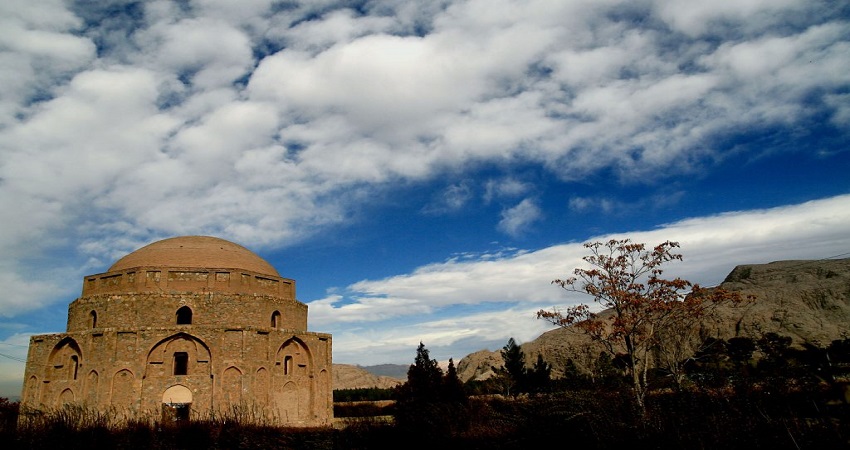Jabalieh Dome

Shirazi Faloodeh
April 13, 2020
Street Food in Tehran
April 13, 2020Jabalieh Dome; An Ancient Stone Building Made with Camel Milk
Jabalieh Dome is a spectacular octagonal stone building in Kerman province, southeast of Iran, built in the second century BCE. The dome, a place of historical importance in Iran, has been constructed of stone and brick, though the building is of stone and gypsum, and its architectural effects have been inspired by the Sassanid period.
The dome, which is one of the most spectacular ones in Kerman, has survived without any fence around it. Some scholars say Jabalieh was built as an observatory, but others believe the dome was an important tomb. Some European scholars say this dome belongs to the Seljuks, but it is mostly believed that it was built in the second century BCE.
It is of octagonal design and comprises three floors crowned by a rather flat dome, totally empty inside. It may have been a Zoroastrian building and is remarkable because of being constructed of stone rather than the more common brick. It is also said that camel milk was used instead of water in its construction, which historians see as the reason for its strength. This octagonal building has eight doors that are located on each side.
In order to strengthen the building, they have already covered seven doors with stones and kept only one door open. The roof of the dome has been made of bricks and the inside of the building includes beautiful reliefs. But unfortunately, most of these reliefs have been destroyed.
Within this historical dome, there is a valuable inscription called the inscription of the mosque Abder Ashkan. It is one of the oldest inscriptions in this place, belonging to a mosque in the northern part of the city (Ashkan). The inscription is carved on a piece of natural stone in Kufic script.

